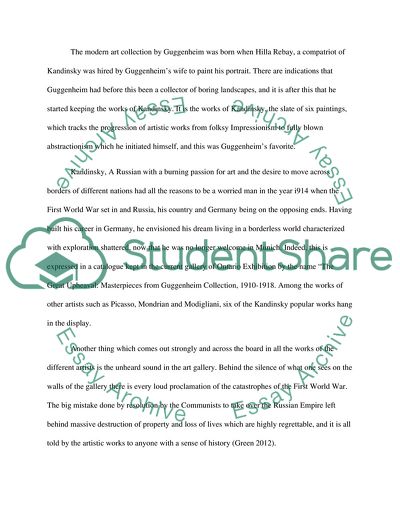Cite this document
(Art Gallery of Ontario: The Great Upheaval: Masterpieces from the Essay, n.d.)
Art Gallery of Ontario: The Great Upheaval: Masterpieces from the Essay. https://studentshare.org/culture/1811061-exhibition-review-on-art-gallery-of-ontario-the-great-upheaval-masterpieces-from-the-guggenheim-collection-1910-1918
Art Gallery of Ontario: The Great Upheaval: Masterpieces from the Essay. https://studentshare.org/culture/1811061-exhibition-review-on-art-gallery-of-ontario-the-great-upheaval-masterpieces-from-the-guggenheim-collection-1910-1918
(Art Gallery of Ontario: The Great Upheaval: Masterpieces from the Essay)
Art Gallery of Ontario: The Great Upheaval: Masterpieces from the Essay. https://studentshare.org/culture/1811061-exhibition-review-on-art-gallery-of-ontario-the-great-upheaval-masterpieces-from-the-guggenheim-collection-1910-1918.
Art Gallery of Ontario: The Great Upheaval: Masterpieces from the Essay. https://studentshare.org/culture/1811061-exhibition-review-on-art-gallery-of-ontario-the-great-upheaval-masterpieces-from-the-guggenheim-collection-1910-1918.
“Art Gallery of Ontario: The Great Upheaval: Masterpieces from the Essay”. https://studentshare.org/culture/1811061-exhibition-review-on-art-gallery-of-ontario-the-great-upheaval-masterpieces-from-the-guggenheim-collection-1910-1918.


